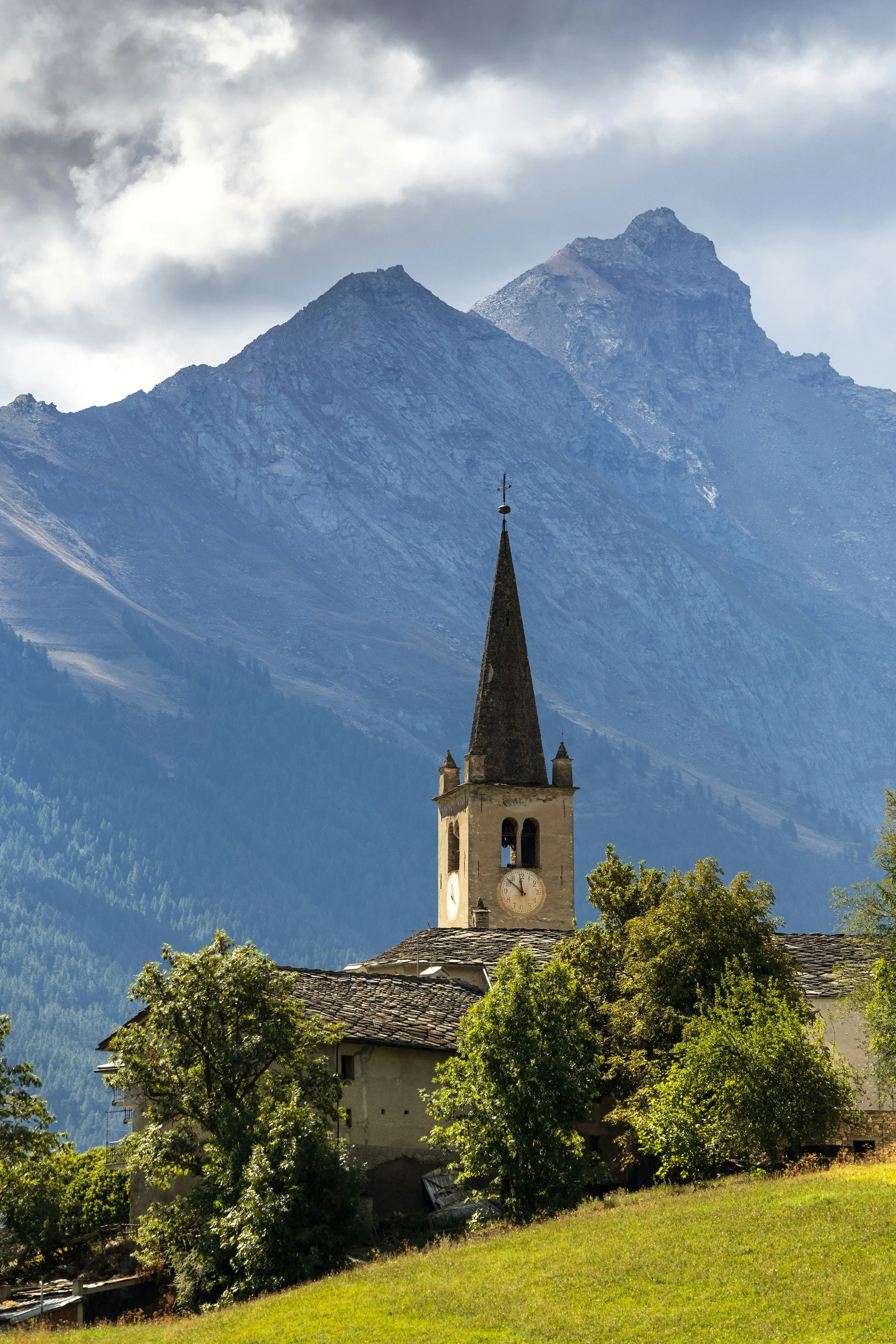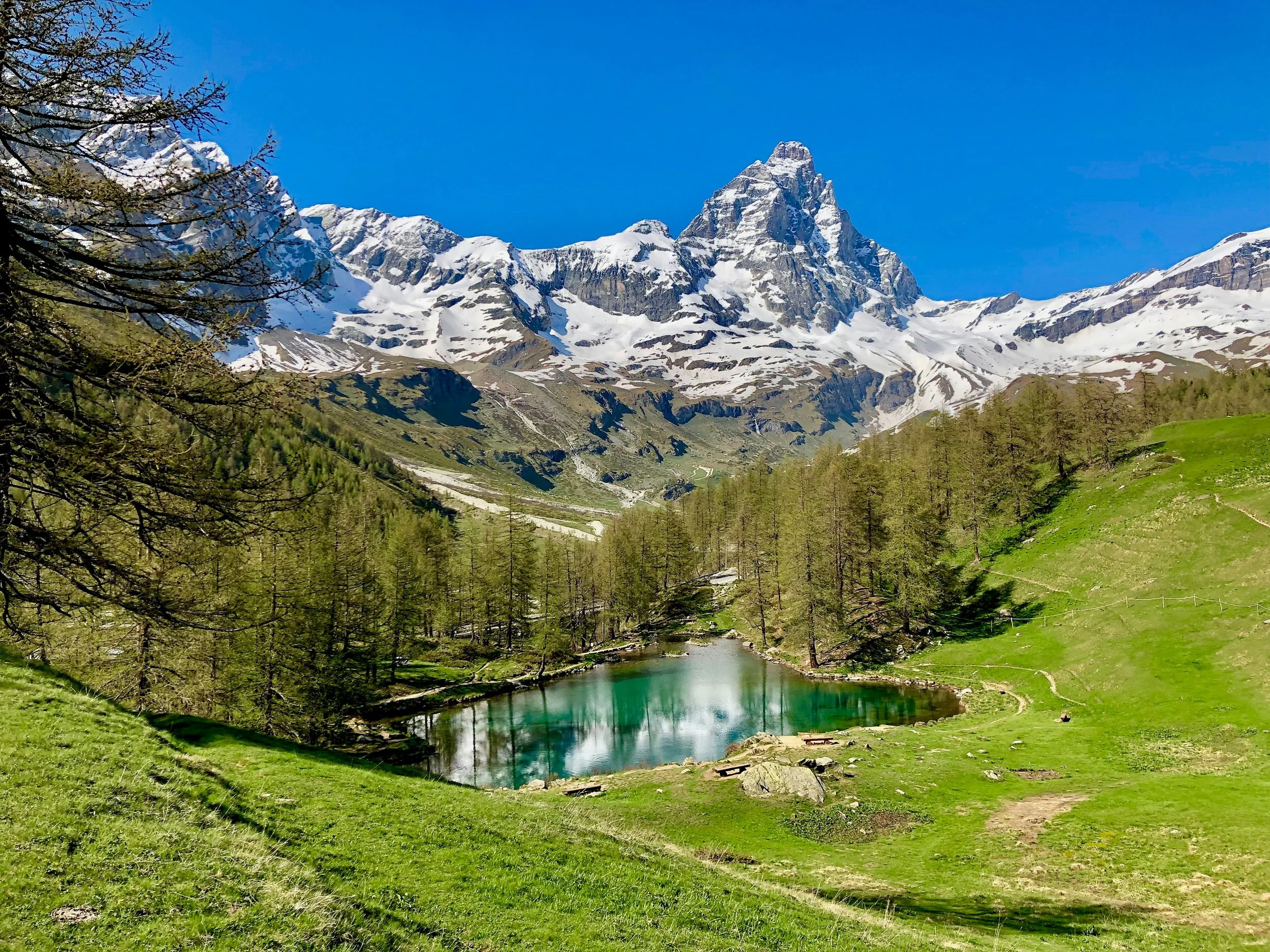Aosta Valley
Also known as the Valle D’Aosta, this northern Italian region is both a skiier’s paradise and a food-lover’s heaven. In the absolutely stunning landscapes of the Italian Alps, this region features mountains like Mont Blanc, the Matterhorn (the former on the border with France, and the latter on the border with Switzerland), and Gran Paradiso, where the views truly could not get any more incredible. It was founded in 25 B.C. by Emperor Augustus and originally named Augusta Pretoria, which is why there is such heavy Roman influence in the area.
Because of its history and proximity to France, the official languages of the region are both Italian and French. Many locals also speak Valdotain, which is a specific dialect of the Franco-Provençal language. The Aosta Valley is the least-densely populated of all of Italy’s 20 regions, but its mashup of influences from surrounding countries and cultures makes the region so unique.
While known for its pristine skiing and snowboarding, Aosta Valley offers so much more beyond that. It includes ancient ruins and medieval castles (it has the 2nd largest number of Roman ruins in Italy, just after Rome itself!), serene lakes, imposing mountains—some with quaint villages tucked into them—boutique wineries growing their grapes at the highest altitudes in Europe, and some of Italy’s best food.
Notable Cities and Towns:
Aosta, Saint-Vincent, Courmayeur, Bard, Cogne, Étroubles, Saint Oyen
What to See:
An alpine town boasting some of the most majestic views in the Aosta Valley, Courmayeur is an absolute dream for those who like trekking through breathtaking and dramatic scenery. Right at the foot of Mont Blanc, Courmayeur offers hikes of varying length, perfect for either a day trip (La Suche, Rifugio Giorgio Bertone) or an extended stay for the seasoned hikers (Tour du Mont Blanc trek).
From Courmayeur, you can also take the Skyway Monte Bianco, which is a cable car that will bring you over parts of Mont Blanc. For some of the most beautiful views (and a restaurant at the Punta Helbronner stop!) you cannot beat this experience.
The route between the ski resort/mountaineering towns of Valtournenche and Champoluc is one of the most scenic drives in the region. Beginning in Valtournenche in the shadow of the Matterhorn, you can enjoy the rustic alpine village, then head toward Champoluc. The route goes south around Mont Tantane and its surrounding area, and passes through Saint-Vincent, which is an alpine resort town with one of the largest casinos in Europe, as well as thermal spas and archaeological gems.
Italy’s first national park, Gran Paradiso, is famed for many things, including its protection of wild ibex. In the summer, there are numerous hiking and cycling trails across five different valleys. Cross-country skiing is a popular activity in the winter months. The natural beauty of this park (which spreads into neighboring Piedmont) includes waterfalls and alpine streams, flower-covered hills, and stunning lakes.
If you’re into castles, the Aosta Valley has a plethora of them, filled with history and art: Issogne Castle, Savoy Castle, Ussel Castle, Fenis Castle, Fort Bard, Royal Sarre Castle, Aymavilles Castle, and Sarriod de la Tour Castle, just to name a few!
Food and Drink:
The cuisine of the Aosta Valley is often described as hearty and rustic. A cold winter needs comfort foods! Some of the most famous foods and dishes of the region include polenta concia and fonduta, often made with the Aosta Valley’s famed DOC-protected Fontina cheese. Stews and pastas are big here as well, such as gnocchi alla bava, carbonade Valdostana, and Seupa à la Vapelenentse. Be sure to also try the Jambon de Bosses, any local pear dishes, cavolo verza, capriolo in civet, and lardo di Arnad.
For the culinary-minded, you can’t gloss over the food scene in Courmayeur, which boast a number of great restaurants featuring local ingredients and focused on Alpine cuisine. Along with Courmayeur and Aosta, the towns of Cogne and Breuil Cervinia have a number of Michelin-recommended restaurants to indulge at, ranging from the traditional to experimental, modern cooking.
If you want to imbibe in the local wines from some of the highest-elevation vineyards in Europe, look for these wines: Fumin, Muscat, Picontendro (Nebbiolo), Priè Blanc, Nus Malvoisie, Cornalin, and Petite Arvine. These are all specialties of the Aosta Valley and represent its unique climate and terroir. Additionally, make sure you try some local genepì while you’re there—this herbal liquor with a fascinating history is the perfect end to a meal!
Ideal For:
Ski and snowboarding lovers (obviously!), foodies, hikers and cyclists, nature buffs, obscure history fans, wine enthusiasts.






